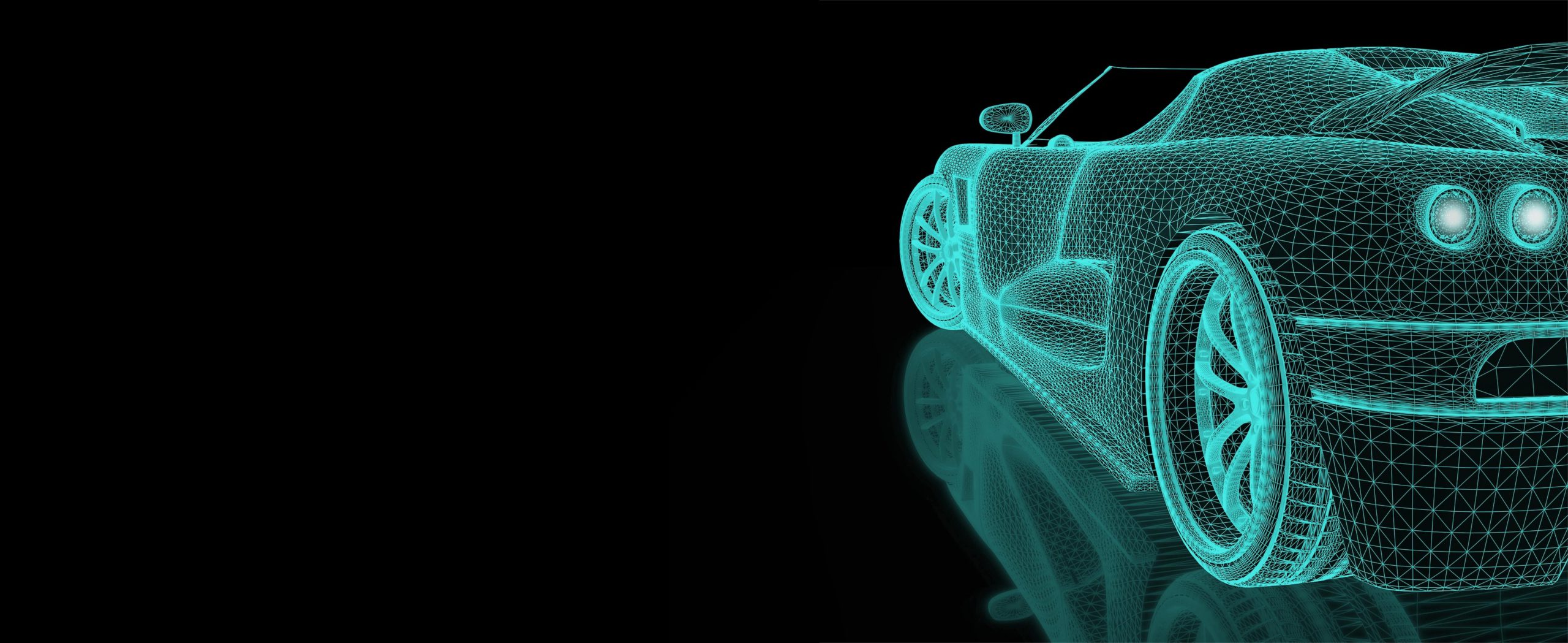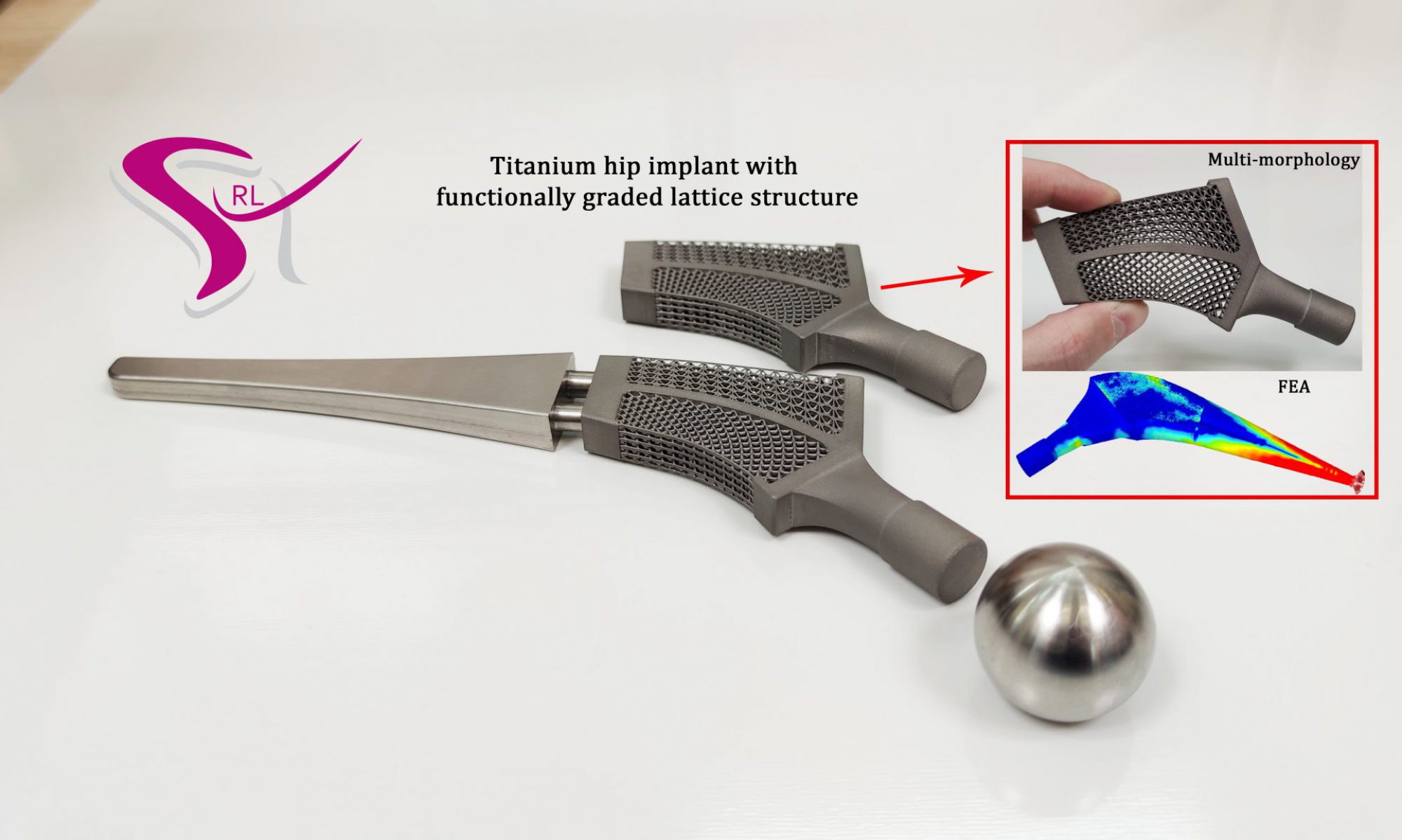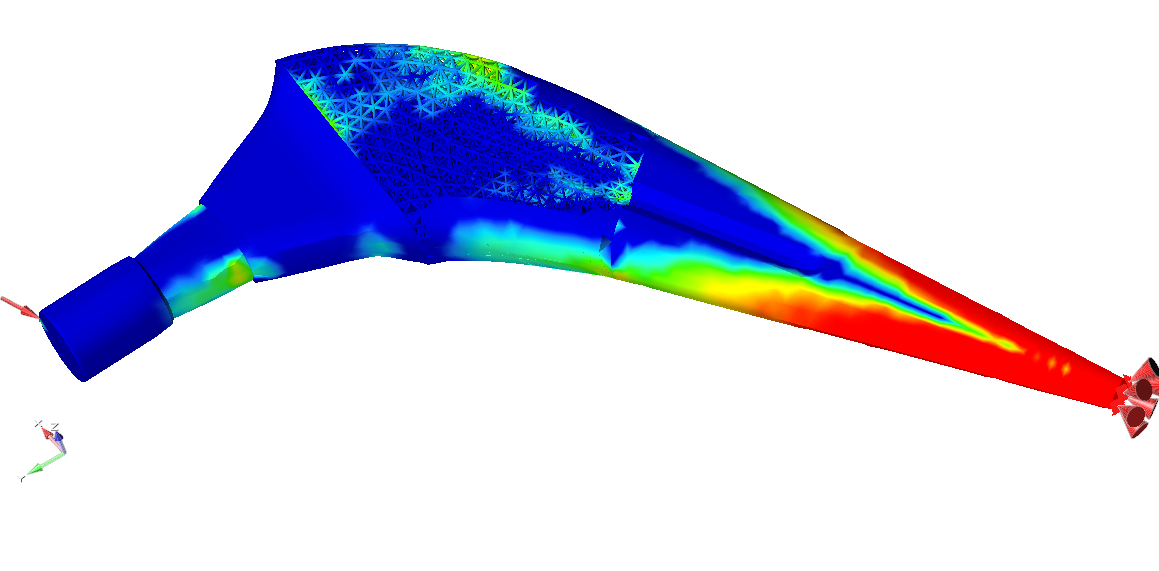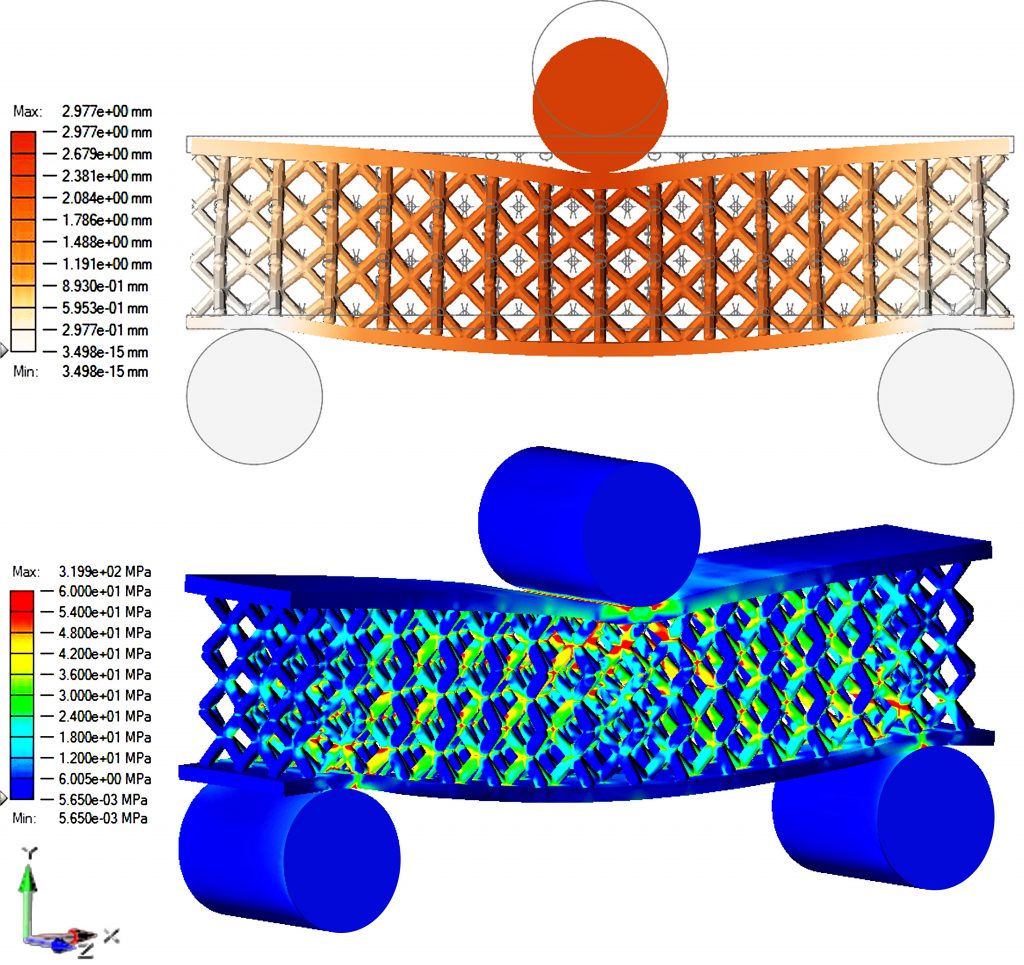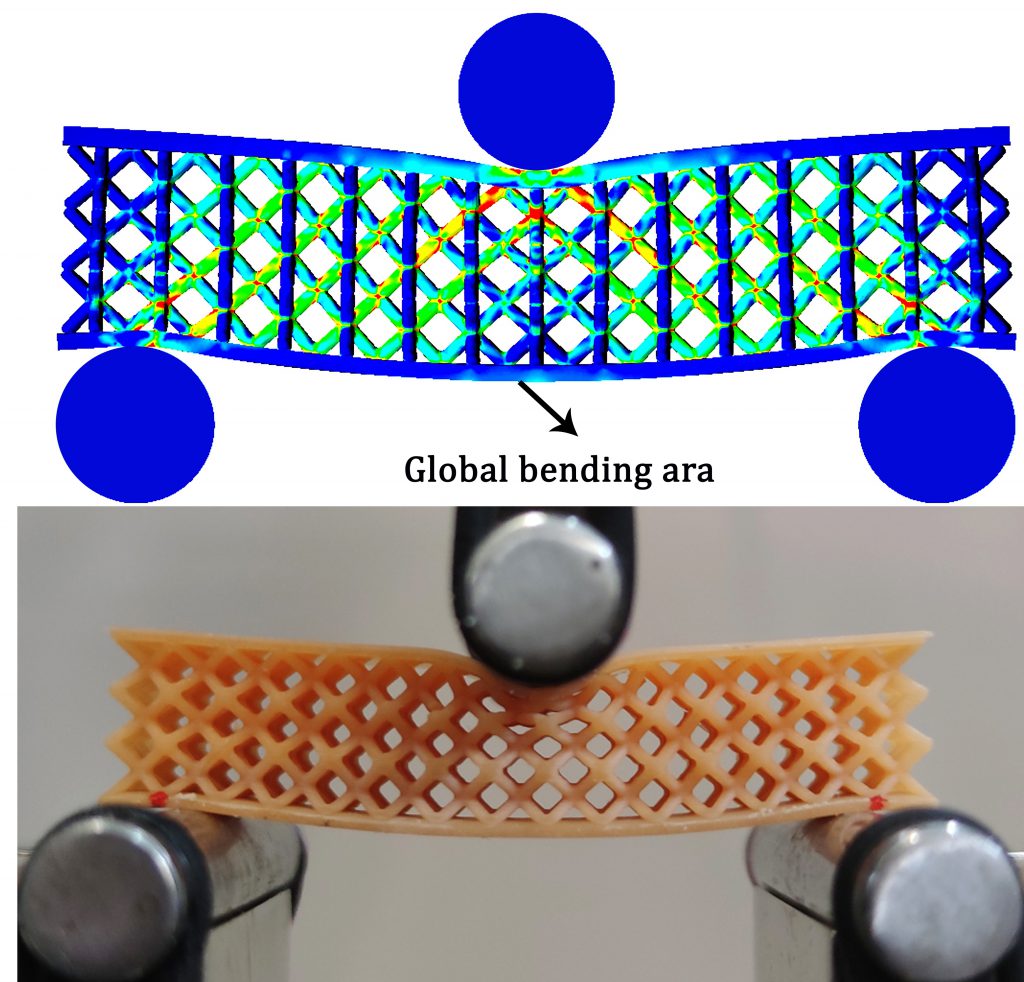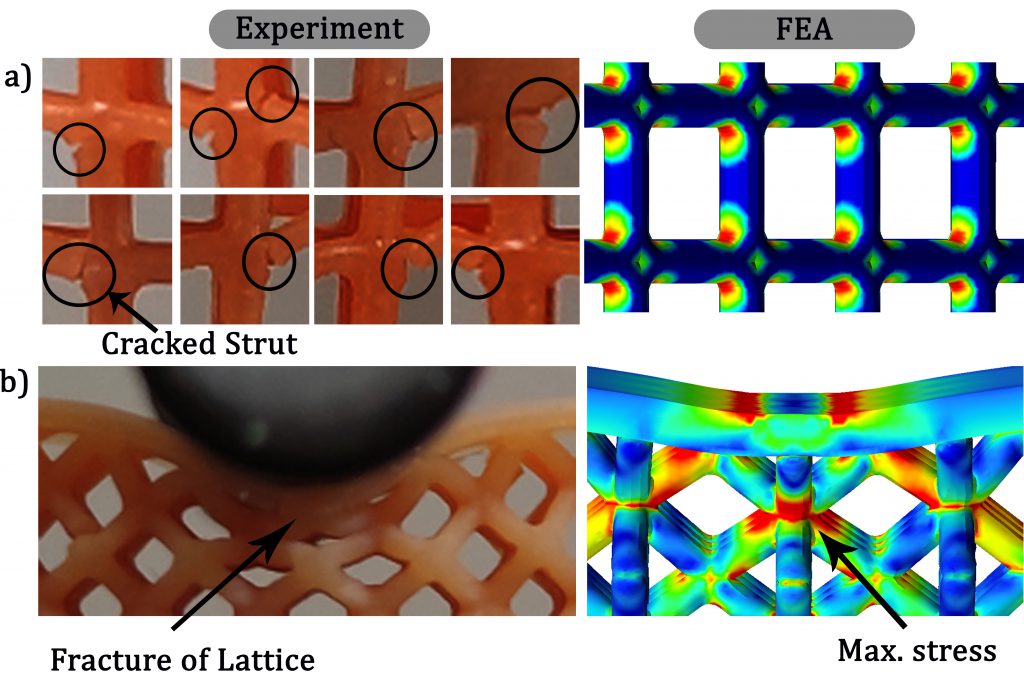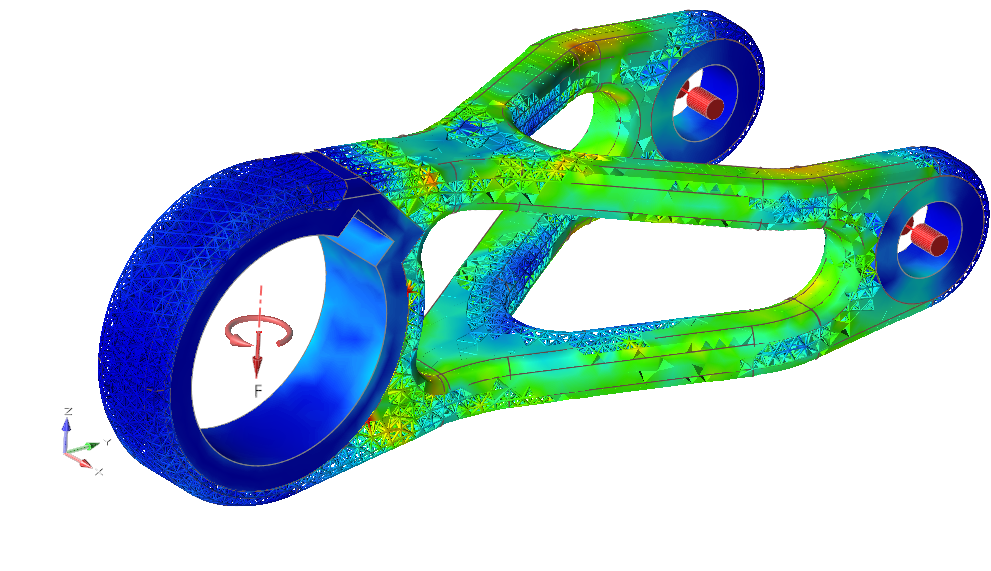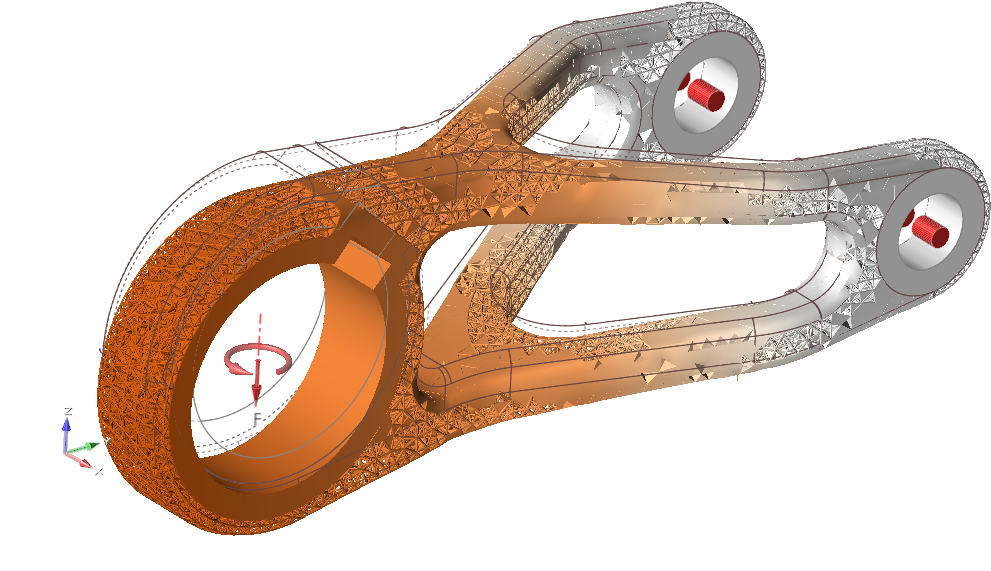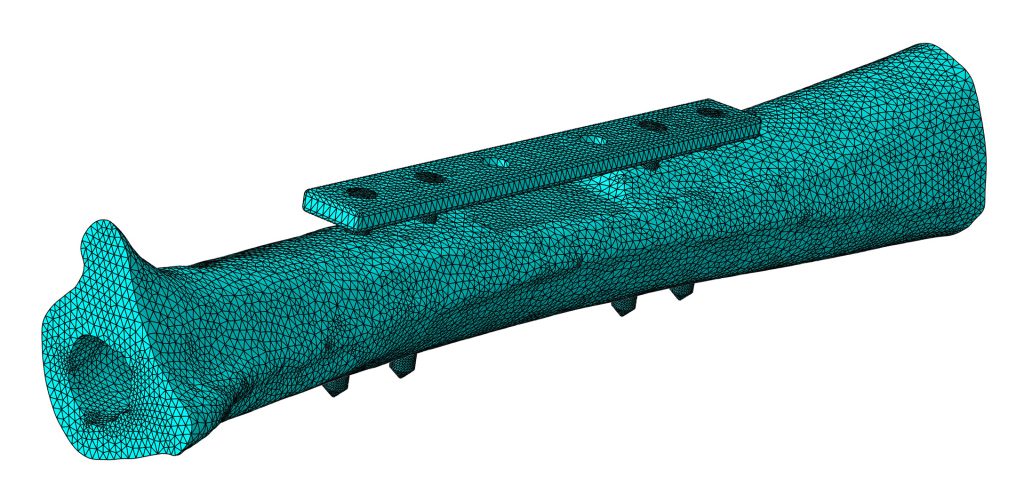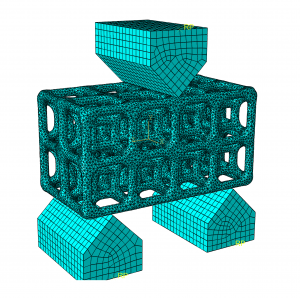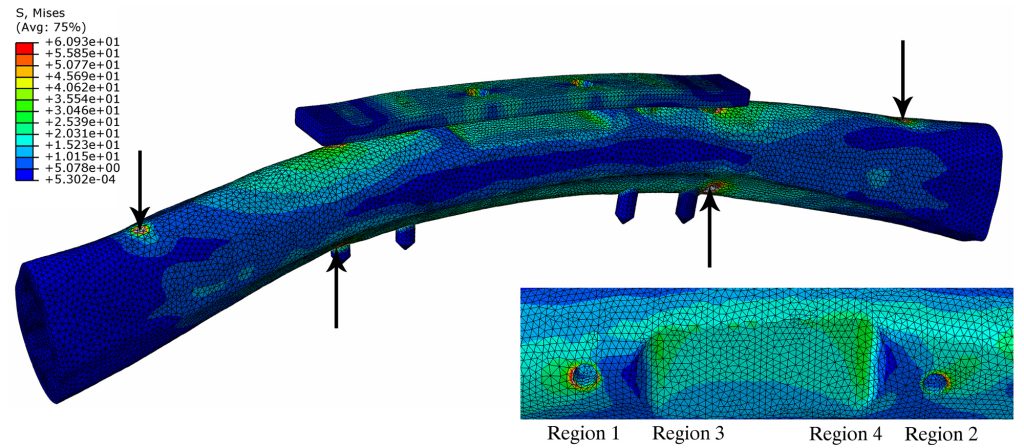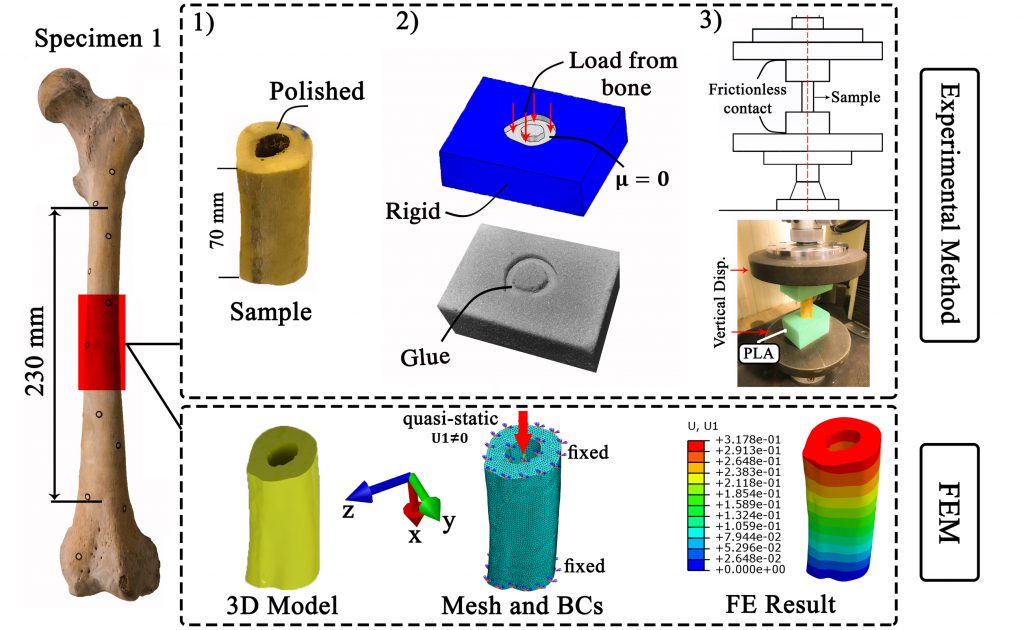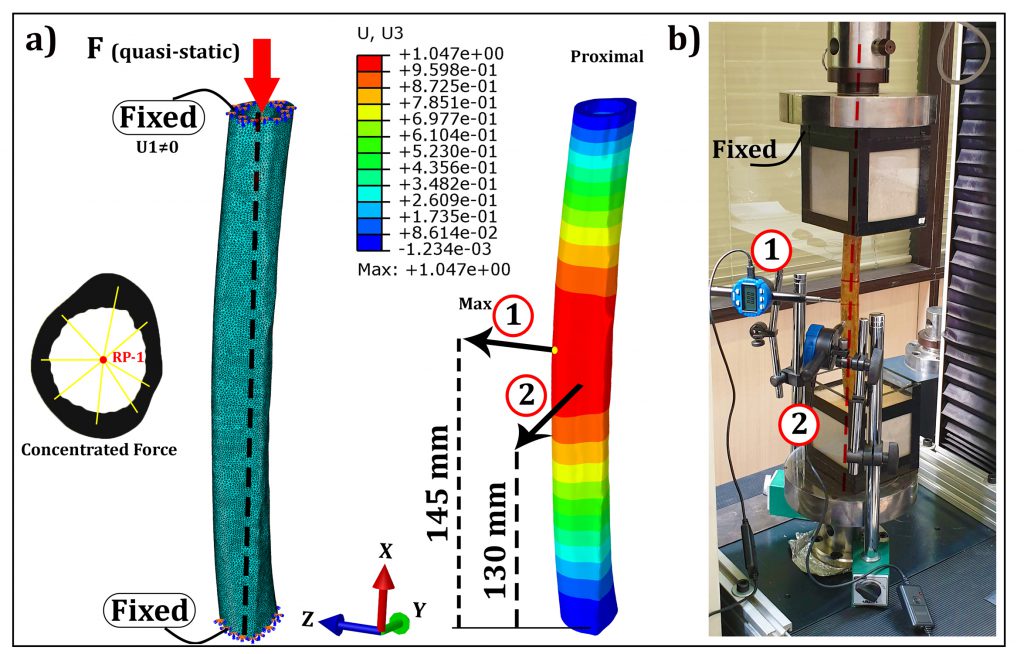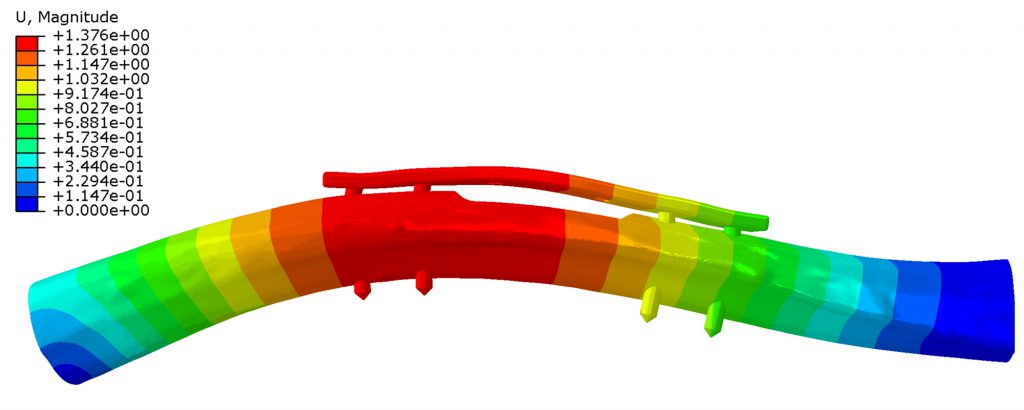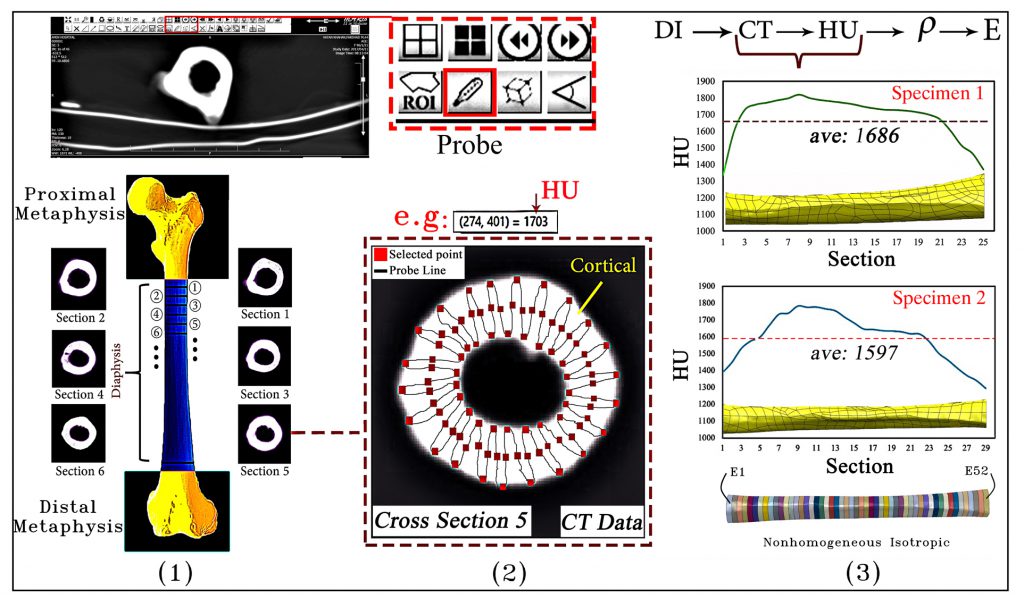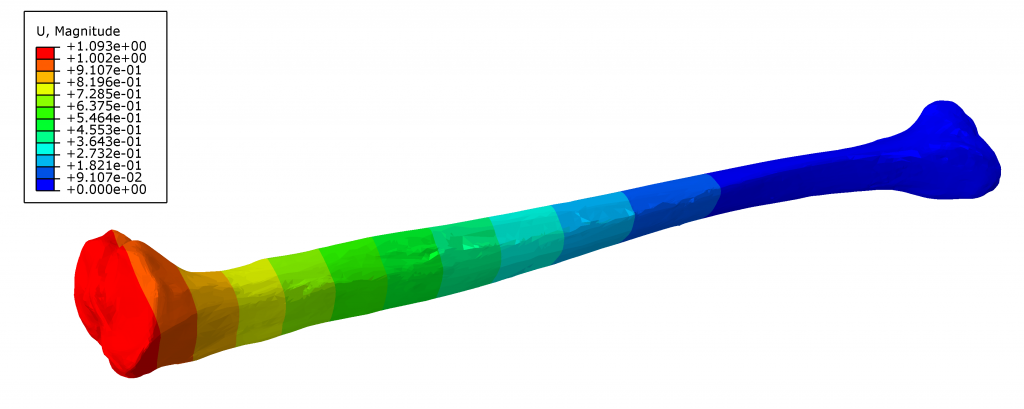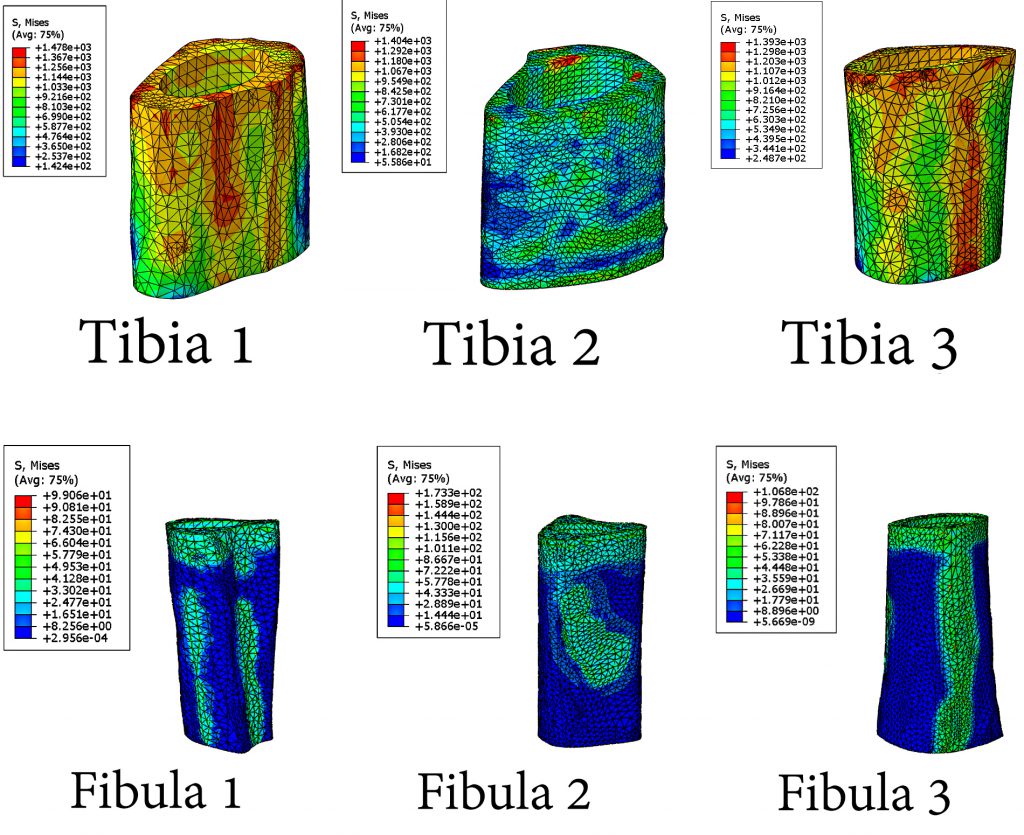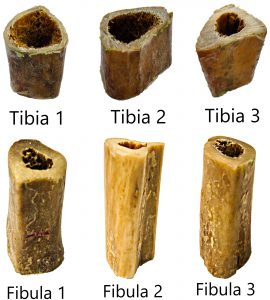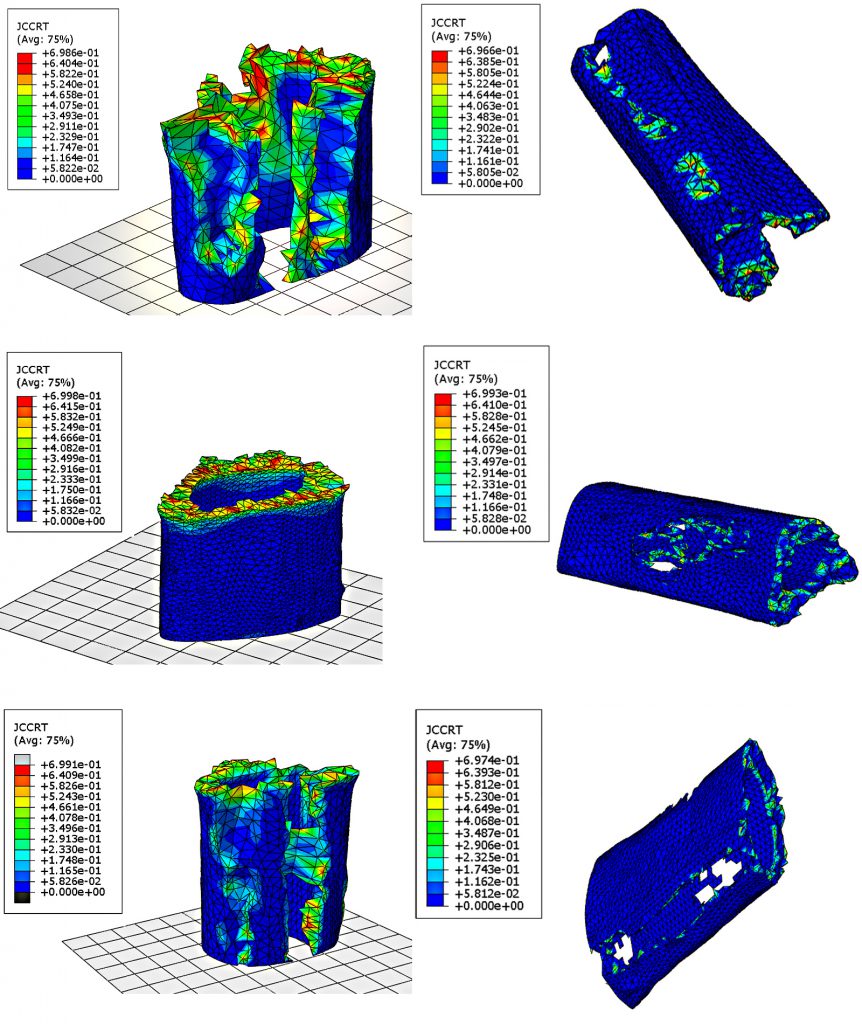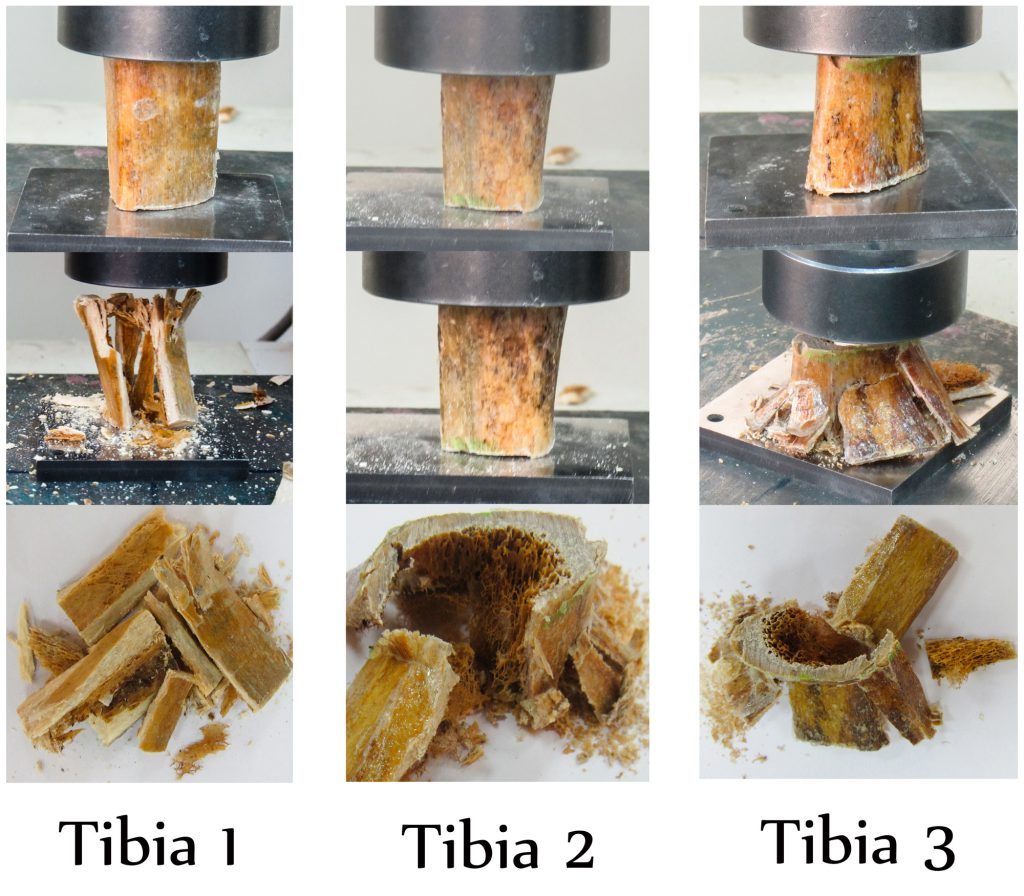Ability to Analyse Static, Quasi-Static and Dynamic FE Problems with Abaqus
Ability to Buckling, Bending, Impact and Compressive Analysis
1. Finite Element Analysis (FEA)
Lattice Structures Simulation and Optimization
2. Mesh Generation
3. 4-Point Bending Analysis
The regions of peak von Mises stress concentration within the reinforced construct around the screws or at the angle of the base of the osteotomy site in 4-point bending.
4. Quasi-Static Analysing with Dynamic Implicit Solver in Abaqus
Compressive Analysing and Validation Results Based on Experimental Data
The force-displacement graph of the specimen which will be determined by compressive test will be compared with results of FE analysis. Both ends of the specimen were fixed between the mandible and movable heads for all specimen (i.e. clamped-clamped conditions). The specimen was analyzed under quasi-static load. A variable concentrated force between 0 kN and 43 kN was applied.
5. Mechanical Deformation Analysis
This Figure shows the FE analysis and the specimen under experimental test. The specimen was analyzed under quasi-static load. According to maximum deflection obtained by FEA, a calibrated digital indicator was placed on the intended location and then load-displacement was determined experimentally. Also, in Y direction and at middle of the length, another indicator was located and then load-displacement was determined, as well.
8. Other Biomechanical Analysing
